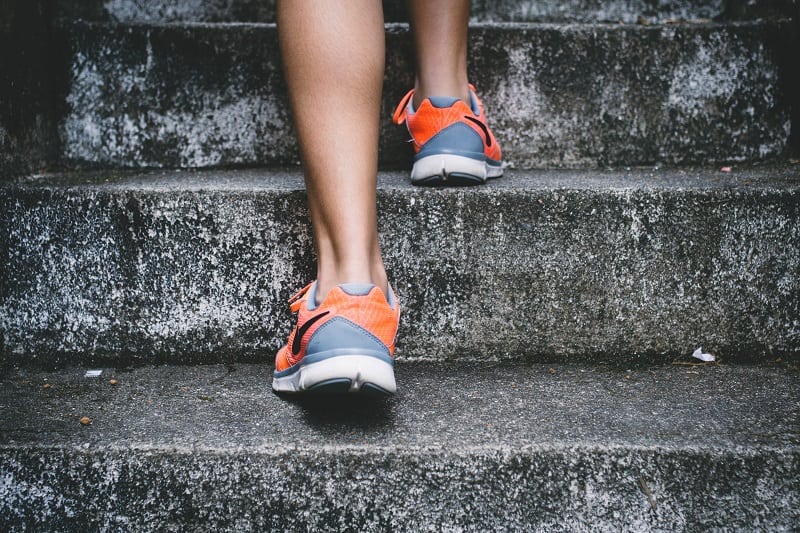A longer version was originally published on HobbyHelp.com and is reproduced here with the author’s permission.
The Canadian Women’s Foundation is always running a race: the race to help women and girls move out of violence, out of poverty, and into confidence and leadership. We are DONE WAITING. We are sprinting toward gender equality for ALL women and girls!
Please join our Movers + Strivers Team as we walk, run, and roll at the Scotiabank Toronto Waterfront Marathon 5km race on October 20! Be a part of the effort to raise $25,000 for the impactful programs we fund across Canada.
If you would like to do the 21km or 42km race in support of us, you can start your own team or run on your own to get us to the big goal.
New to marathons? These tips are for you:
BEFORE THE RACE
- The most important piece of advice for novice runners is to properly train several months in advance. You can also look up a ‘couch to 5k’ program, some of which can get you race-ready in as little as 9 weeks.
- Listen to your body. There is absolutely nothing wrong with repeating a week of a training program or jumping ahead if you’re ready.
- As your training runs increase in mileage, you’ll need more fuel before, during, and after each run and on race day. There are many gels, chews, and sports drinks on the market that are easy to consume while running.
- Log your runs in a journal or an app. Being able to look at your progress is extremely motivating!
- You will need moisture-wicking, weather-appropriate clothing.
- As a general rule of thumb, you’ll want to add 20 degrees to the expected temperature on race day, and dress accordingly. So, if the temperature at race time is supposed to be 10 degrees, you’ll actually want to wear an outfit you’d be comfortable in if it were 30 degrees outside.
- Wear your race day outfit for at least one test run to ensure there is no chafing or discomfort.
- You may also want to get a running pouch or belt that comes with two water bottles. The majority of marathons have aid stations set up along the course with water and/or sports drinks available to runners.
- You’ll need to invest in a good pair of comfortable, supportive running shoes. Try out a variety of shoes at a store that specializes in running shoes. The staff will help you choose the right pair of shoes for your specific feet and needs. They’ll measure your feet, and they may perform a gait analysis on a treadmill. When trying on running shoes, wear the same type of socks you plan to wear for the race. Go shoe shopping in the late afternoon or evening, as feet tend to swell throughout the day—and they’ll most-certainly swell on race day. You’ll want to log at least 80km in your new shoes before race day but don’t overdo it – after 240km, running shoes begin to lose cushioning and support, both of which are essential for race day.
- If you plan to listen to music, you may want to invest in wireless headphones.
- Lay everything out the evening before so you don’t forget anything! This checklist may help:
- Running shoes
- Sports bra
- Throwaway gear (long sleeve shirt, pants, hat, and/or gloves you don’t mind ditching before the race. These are typically donated to charity)
- Timing chip (to keep track of how long it takes you to run the race)
- Running socks (avoid cotton)
- Moisture-wicking tank or tee
- Bag to hold gear
- Race information (address, directions, start time, etc.)
- Running shorts, cropped pants, or tights
- For cold temperatures: jacket and/or arm warmers
- Bib (filled out) and safety pins
- Driver’s license or other identification
- Race information (address, directions, start time, etc.)
- Cash (bills are best)
- Cellphone and charger
- Running belt
- Filled water bottles
- Headphones
- GPS watch
- Lip balm (preferably with sunscreen)
- Medications, including pain reliever
- Fuel (gel, chews, candy, etc.)
- Hair ties
- hat or visor
- Sunglasses
- Sunscreen
- Post-race outfit, shoes, and socks to change into
- Post-race food and drinks
- Towel
- For cold temperatures: Blanket, coat, hat, gloves
- Tissues
- Bandages
- Anti-chafing stick or vaseline
- Bandages
- Wet wipes
DAY OF THE RACE
- Think about your race day ritual – what makes you comfortable that morning? Is there a routine you want to follow to help minimize any anxiety you might have about the race? Meditation and breathing exercises can help.
- Check the weather forecast one last time.
- Charge your phone.
- Check your race kit one last time against the checklist above.
- Eat a light breakfast three to four hours before race time. Don’t introduce any new foods on race day!
- Make sure you’re starting off hydrated, but don’t drink large amounts of water.
- Before the race starts, take a few minutes to use the restroom, do a brisk warm-up walk, and stretch your hamstrings, hip flexors, and quads.
- Don’t start off too fast. Pace-wise, you should be able to carry on a conversation comfortably. Your body will help guide you as to what’s best. Some runners tend to pick up the pace around the halfway mark. Some speed things up even more for the last stretch – there is nothing quite like giving it your all while crossing the finish line!
- Even if the weather is perfect, and you’re well-trained, fueled, and rested, keep in mind that, despite near-perfect circumstances, our bodies aren’t always up to running this much! Walking during the race is completely okay and perfectly normal. Listen to your body and, most importantly, don’t beat yourself up for walking or taking a break.
- Your first instinct may be to sit or lie down after running for several hours, but your body needs to ease back into its pre-marathon routine. Continue to walk at an easy pace, hydrate, eat a small snack, and celebrate your victory! You’ll want to continue eating balanced meals and snacks throughout the day, and don’t forget to hydrate. Your body will be craving calories.
AFTER THE RACE
- Once you’re home and able to reflect on the experience, write down your thoughts in your training journal or app. These notes may be helpful for future training cycles and races, and they’ll help you remember details from a whirlwind day!
- You can help decrease any inflammation in your legs by wearing compression socks or tights, or soaking your legs in cold water or an ice bath. Set a timer for 10 to 15 minutes. It will also help to elevate your legs above your heart for 15 to 20 minutes.
- Your body may be craving a nap after the race. Don’t fight it! Just don’t go to bed dehydrated or hungry. During sleep, the body will begin to recover and repair itself. If you can squeeze in a 90-minute nap, your body will have the chance to fall into deep sleep, which is especially restorative.
- While rest and recovery is important, you should take a short, easy walk or do some cross-training the day after the race. Gentle activity can help stiffness and soreness. Aside from a recovery walk the day after a marathon, take a few days off from exercise altogether, except for light stretching each day. You may also want to schedule a massage. You may feel ready to start running again a week or two after a marathon. Always listen to your body, and if you have any persistent aches or pains, see a doctor before returning to running.
You did it! You’ve officially completed your first race!
Feeling revved up and ready to go now? Join us at the Scotiabank Toronto Waterfront Marathon on October 20: Sign up with our team, or fundraise for us by starting a team or running on your own to help us reach our $25,000 goal!
Learn More:
- A Step-by-Step Guide to Engaging your Employees in Fundraising
- Why I’m Running a Marathon Without Any Training
Take Action:
Sign up for our e-newsletter to have our latest stories and resources sent to your inbox.
Follow us on Facebook and Twitter to join a national conversation about empowering girls.







